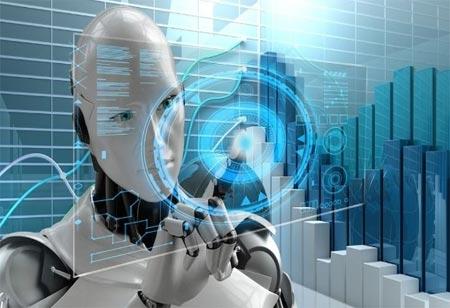Balancing AI Advancement with Workforce Sustainability: Navigating the Future of Employment
AI as a Catalyst for Economic Expansion and Workforce Transformation
Artificial intelligence is rapidly reshaping global economies by enhancing productivity, streamlining operations, and fostering innovation across diverse industries. From automotive manufacturing to financial services, AI-driven technologies are fueling unprecedented economic growth. However, this technological surge is simultaneously disrupting traditional employment patterns, particularly in roles centered on repetitive or manual tasks. While AI is spawning entirely new sectors and job categories, millions of workers face displacement, underscoring the urgent need to bridge the gap between technological progress and workforce adaptability.
To navigate this complex landscape, it is essential for governments and business leaders to implement forward-thinking policies that:
- Prioritize comprehensive reskilling and upskilling initiatives to equip employees with skills relevant to emerging roles.
- Encourage human-centric AI development that complements rather than replaces human labor.
- Establish robust social protection mechanisms to support workers during transitional periods.
Failing to adopt such measures risks exacerbating social inequalities and economic instability, making inclusive innovation a societal imperative.
| Industry | AI Influence | Employment Shift |
|---|---|---|
| Automotive Manufacturing | Robotic automation of assembly lines | Transition to robotics supervision and system maintenance |
| Financial Services | Algorithmic trading and predictive analytics | Expansion of roles in data analysis and compliance |
| Customer Support | AI-driven virtual assistants managing routine queries | Emphasis on handling complex issues and emotional intelligence |
Ethical Imperatives and Safeguarding Worker Rights Amid AI Integration
As AI becomes increasingly embedded in workplace operations, protecting employee rights and ensuring ethical deployment of these technologies is paramount. Collaboration between regulators, employers, and labor representatives is necessary to develop transparent policies that govern AI use, guarantee worker participation in decision-making, and emphasize continuous learning opportunities. Without such frameworks, there is a heightened risk of deepening disparities and eroding the dignity associated with meaningful employment.
Key approaches to uphold worker protections include:
- Modernizing labor legislation to address challenges posed by automation.
- Mandating corporate transparency regarding AI’s impact on workforce dynamics.
- Investing in lifelong learning programs to facilitate skill adaptation.
- Strengthening social safety nets to ease transitions caused by technological disruptions.
| Issue | Recommended Action | Anticipated Benefit |
|---|---|---|
| Workforce Displacement | Comprehensive retraining initiatives | Improved employment continuity |
| Employee Privacy Concerns | Regulation of AI monitoring systems | Enhanced data privacy and trust |
| Algorithmic Bias | Diverse oversight committees for AI governance | Fairness in recruitment and advancement |
Empowering the Workforce Through Education and Skill Development
With AI transforming job requirements at an accelerating rate, equipping workers with relevant skills is critical to maintaining employability. Both public institutions and private enterprises must commit to substantial funding for reskilling programs aligned with technological trends and labor market needs. This commitment not only addresses social equity but also strengthens economic resilience by fostering a workforce capable of thriving in a digital economy. Initiatives should encompass a variety of learning formats, including virtual courses, apprenticeships, and hands-on training.
Ensuring equitable access to these educational resources is vital, particularly for underserved populations and those in sectors most susceptible to automation. Effective programs might feature:
- AI-driven personalized learning pathways tailored to individual skill gaps and market demands.
- Collaborative efforts between governments and industry to design curricula and provide financial support.
- Comprehensive support services, including career guidance and mental health resources.
| Industry | Reskilling Emphasis | Employment Outcome |
|---|---|---|
| Manufacturing | Operation and maintenance of automated systems | High retention with new technical roles |
| Healthcare | AI-assisted diagnostics and data analytics | Broadened career opportunities |
| Retail | Digital commerce and customer engagement technologies | Job transformation with reduced redundancy |
Developing Inclusive Policies and Social Protections for AI-Driven Economies
Governance structures play a pivotal role in ensuring that AI’s advantages are shared broadly while minimizing adverse effects on vulnerable workers. Policymakers must enact clear regulations that promote ethical AI use, enforce corporate accountability, and prevent exploitative labor practices. Equally important is facilitating widespread access to AI literacy and reskilling programs, enabling workers to transition into new roles rather than face outright job loss.
Complementary to regulatory efforts, enhanced social safety nets are essential to cushion the economic impact of automation. Expanding unemployment benefits, piloting universal basic income schemes, and integrating continuous education with financial assistance can create sustainable pathways for workforce adaptation. The table below outlines essential policy components for balanced AI integration:
| Policy Area | Strategic Initiatives | Projected Impact |
|---|---|---|
| Regulatory Oversight | Enforce AI transparency and ethical standards | Equitable labor conditions and reduced discrimination |
| Education & Training | Expand AI literacy and skill development programs | Empowered workforce with sustained employability |
| Social Welfare | Implement universal basic income and enhance benefits | Financial security for displaced workers |
| Employment Support | Provide career transition services and counseling | Smoother labor market adjustments |
Conclusion: Charting a Path Toward Inclusive AI-Driven Progress
As artificial intelligence continues to evolve and permeate various facets of the economy, it is crucial that stakeholders—from policymakers to corporate leaders—forge strategies that protect human employment while embracing technological innovation. The transformative potential of AI is immense, but its success must be measured not only by economic gains but also by its ability to enhance human well-being. Achieving this balance requires deliberate, inclusive policies and investments that empower workers, ensuring AI serves as a catalyst for opportunity rather than displacement.













